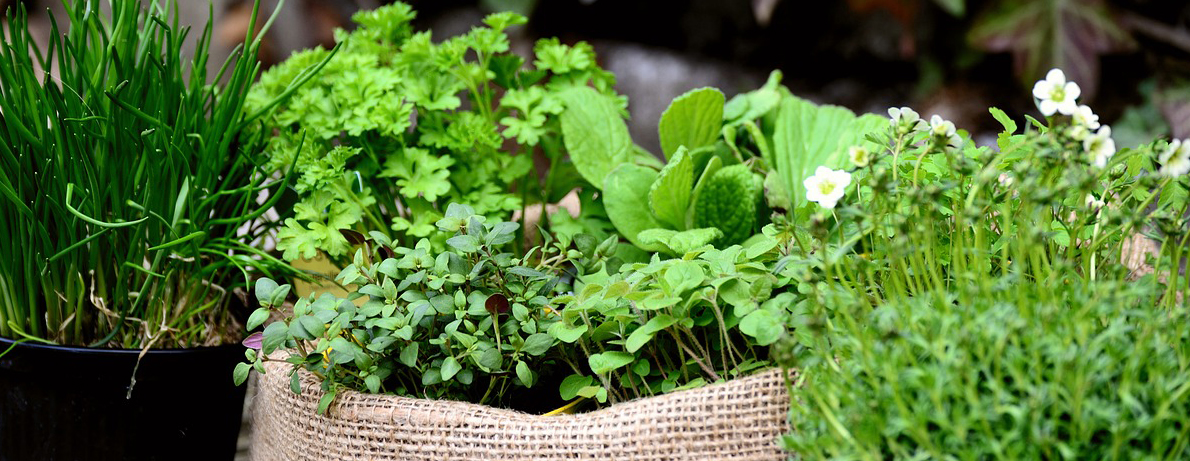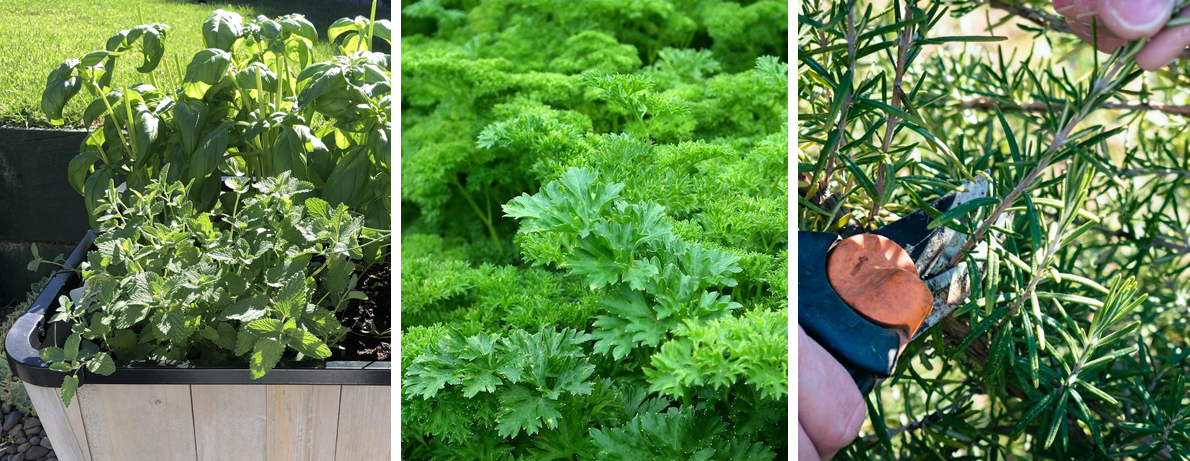Posted by Kelly Jean Reyland
5th Dec 2023
Herbs - The easiest way to add flavour to your meals!

If you want to lift your meals to the next level, start growing your own herbs. Dried herbs may be convenient but they simply don’t compare to being able to use fresh herbs in your food for both flavour and texture.
How to start your own herb garden? Choose some reasonable sized pots, around the size of a bucket is a good size to aim for. I know that social media pictures have them thriving in adorable little terracotta pots on your windowsill but reality will have them struggling in too small pots, in too much heat and probably not enough light! The other option is to choose a small area of garden that is convenient to your kitchen. But before you start planting, there are some things to consider.
What do you and your family enjoy eating? That’s a good place to start!
You can just plant a whole lot of herbs but it’s better to start with what you will definitely use.
After you have a list of favourites, you need to look at the eventual size, growth habit and the conditions it prefers.
Let's look at the main contenders...
Starting with the ‘soft herbs’ that you generally eat fresh, added at the end of cooking:
Parsley – flat leaf (or Italian) or curly. Technically a biennial –meaning it lasts about 2 years before setting seed and dying. Good in the sun but it does take up quite a bit of room so give it space to grow. Will grow in part or full sun.
Coriander – people love it or hate it but it is an essential in many Asian style recipes. Coriander grows best in a spot protected from the hot midday summer sun. If left to bake in the sun and dry out it will run straight to seed. It grows really well in the mild temps of spring and autumn. It’s an annual so it’s here for a good time, not a long time!
Basil – the herb that tastes like summer. It needs to be planted after the frosts and will grow happily in the sun as long as it is watered regularly. It needs to be replanted every year.

Mint – essential for drinks and new potatoes! Let’s not tiptoe around this one. Mint is a thug. It spreads like wildfire underground and it doesn’t play well with others in a pot. Don’t plant it in the garden unless you want mint everywhere or you have a way of successfully containing it. Ideally give it a big pot with a saucer that keeps the roots from spreading out the bottom and that you can keep filled with water as it loves damp soil and put it in a shady spot. There are also a multitude of mint varieties and flavours but they all behave the same!
Chives (or garlic chives) – one tastes of onion, the other of garlic. These guys are perennials, so in colder areas they will die back in winter and resprout in spring. You can divide the clump up eventually. Pretty purple flowers that are edible. Loves sun.
Then we have the ‘woody herbs’ that you need to cook.
Rosemary – the classic herb for roast veges and meat. This is a shrub so it needs a spot in the garden or its own big pot. There are some different varieties, some are ground covers, some are tall upright shrubs, and some are in between. If you use it a lot, the best one is an upright variety like Tuscan blue.
Think Mediterranean conditions, such a very sunny spot and free draining soil.
Thyme – many different varieties all tasting slightly different. Some are ground covers and some are upright. Excellent border plant as long as it gets plenty of sun and has good drainage.
Origanum / Marjoram – I view these as interchangeable so in my opinion only one is needed. Marjoram grows as a tight ground cover, Origanum grows as a loose sprawling plant. They both love full sun and good drainage.
Sage - an attractive plant with 3 main varieties with different leaf colours. It can grow quite large, but don’t get too attached, it can die without warning! Again, full sun and good drainage.
I know there are many more options but start with these basics and collect others as you need or want to.
The best thing you can do to keep herbs bushy, compact and healthy is to use them! Picking them is the same as trimming them so it encourages lots of bushy growth which gives you plenty of herbs to use!
In the beginning when plants are small, you can get away with mixing the herbs together in pots (as long as they like the same conditions! ) But over time stronger plants will dominate others and you’ll lose some so if they are herbs that you use regularly, it’s worth putting them in their own pot and giving them room to thrive. If they are short lived such as basil, plant a few plants in one pot to ensure you have plenty to use.
Planting in pots, use a good quality potting mix and don’t forget to add some slow release fertiliser every few months once the initial fertiliser runs out in the potting mix. Applying liquid fertiliser is a good option but remember to wash the herbs well before using!
Many of the soft herbs freely self seed so you can leave them to spread around the garden by leaving the seed head on to complete its life cycle or remove the seeds to prevent that (as a bonus you can then dry the seeds for use in cooking!)
Herbs are a great investment for your garden and your future meals! Stop buying those lanky supermarket ones that you use once and then they wither on the kitchen bench. Plant your own and have them available whenever you need that flavour hit in your food!
Written for Gubba by Kelly Jean Reyland from Garden Advice NZ (www.gardenadvice.co.nz)


























